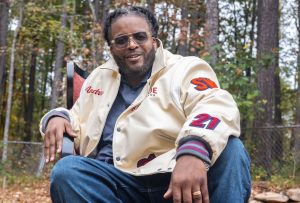Found more notes from my interview with Dave. I closed a recent column with a story about a fatal airplane collision and little boys delighting in a treasure hunt for pieces of a shattered P-40.
I offer these vignettes as a glimpse of a young man’s life during the Great Depression and the Korean War years.
When Dave was 14 he worked at Welsh’s Auto Body in St. Petersburg, Fla.. During the war, people couldn’t buy new cars and took Old Faithful to a body-shop, whatever it took to keep her running. It was the heyday of auto repair.
Mr. Welsh became a mentor to Dave, carefully monitoring his hours at the shop. Child labor laws were strict. He could work for three hours on Saturday, but only one on school days. The boy swept up, bought Cokes for the workers, learned many of the skills that serve him well to this day.
He tells of watching the painter at the shop pin-striping. This fellow was known to imbibe so much that he could barely hold his bottle. But when he had a brush in one hand and can of paint in the other, his hands became so steady he never had to redo a line.
Dave was at Welsh’s one afternoon, when an airplane crashed into the open lot right across the street. The pilot bailed too late; his body lay on the ground nearby.
“He could have aimed at the harbor just a few hundred yards ahead, but he didn’t,” Dave recalls. “It might have saved his life.”
Dave’s family lived here and there during his growing-up years, but he graduated from high school in Everett, Penn., in 1949. He enjoyed the country life. His mother did too, and her inheritance from her father gave her a welcome cushion.
Dave’s father believed you had to wear a suit and tie to be considered a gentleman in business. He wrote for a local newspaper, but pined for the overseas travel business.
Dave’s brother Linn (Lincoln) had a horse. His mom had a cow. “I had cars,” Dave says. “Two A-model Fords, both black. I had one of them painted red.
“The county had school buses, and on snowy days we’d watch for them. If they couldn’t make it up the hill we lived on, I couldn’t drive my car. People don’t believe me when I said our school buses had wooden sides and looked like wooden chicken coops.”
After graduating from high school in 1949, with a draft registration of 1-A, he deemed it wise to further his education rather than be drafted. He enrolled at Pittsburgh Institute of Aeronautics and in 14 months earned his A & E license.
Most of Dave’s stories in those years were played out on the Pennsylvania Turnpike. Built to connect Philadelphia and Pittsburgh, in the early 1950s, this grandfather of the Interstate Highway system linked Carlisle and Irwin.
Driving back to school from Thanksgiving one year, he encountered snow when he got to Midway in his 1934 Studebaker Dictator 6.
“I’m pushing snow along with my bumper and finally pulled off the Turnpike when a big truck slowed down and the driver opened his door. I jumped in and he took me clear to Pittsburgh.”
He went back out early the next day, trying to find his car by walking on the mounds of snow, tapping with a piece of bamboo cane until he heard the metal roof of a car.
He says today that he used to catch rides home almost every weekend – students were not supposed to have a car on campus. But people were more trusting then, and if you carried a notebook and text books, it never failed, you’d get a ride.
The trucking insurance carriers banned picking up hitchhikers, and often patrolled the Turnpike. Dave was the hapless passenger, and when the driver yelled, “Duck down! Duck down!” he didn’t move quickly enough. The insurance inspector just put him out on the edge of the road.
Soon, however, a state patrolman stopped and gave him a ride to Carlisle, where he called his father to come and get him.
In another of Dave’s adventures on the road, a woman driving a new Nash Rambler stopped and asked him did he know how to drive, and would he drive while she got some sleep? Yes, and yes. She let down the passenger seat, a new amenity in that model, and went right to sleep. They got all the way to Carlisle before he had to wake her up.
He nearly paid for his perfidy in an accident on one of those three-lane roads that took so many lives in mid-century. “The guy who had just passed me had a blow-out oncoming car in the middle lane, and flew through the windshield.
“My head hit the rear-view mirror, but I wasn’t hurt except for one knee. The guy I ran into tore up his shoulder. I do remember a big man coming over to the car and picking me up off the hood like a little girl holds a doll, and saying, ‘You’re hurt, son.’”
Dave had only liability insurance, so he had to sell the wrecked Studebaker.
Dave without a car? Unthinkable. A month or so later, “I got a ’36 Ford 2-door for a couple of hundred dollars.”
I tell you all this because when he went to interview with the Air Force shrink, they told Dave that all that exposure to airplane accidents – not to mention a near-miss of his own, solo – gave him “a psychological fear of flying.”
“We had no idea what caused it,” he notes. “I spiraled down from 10,000 feet and got back into the landing pattern.”
Mechanics the Air Force did need, and Dave was theirs for four years at Randolph Field in San Antonio.
“My high school buddy Joe Stine went through at the same time I did,” Dave muses. “He was serving in Cambodia when he was killed.”
Col. Stine was 46. Dave will be 79 this summer.












Leave a Comment
You must be logged in to post a comment.